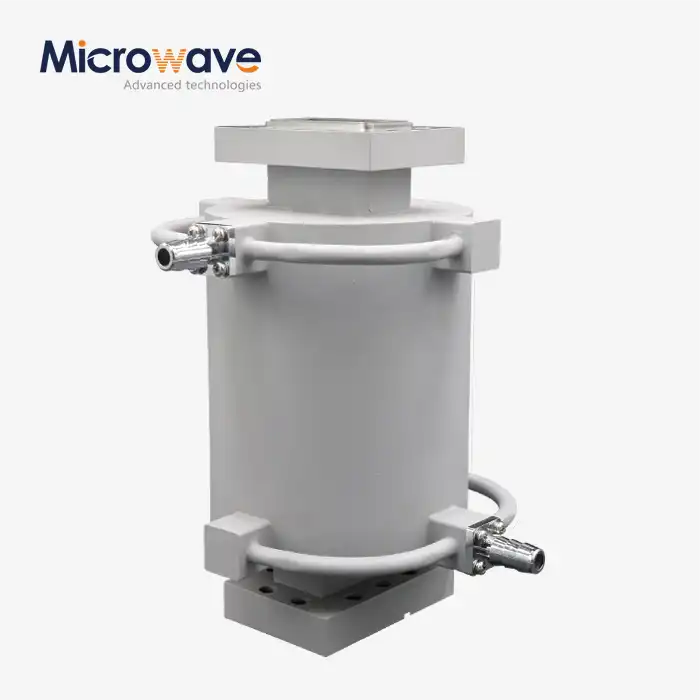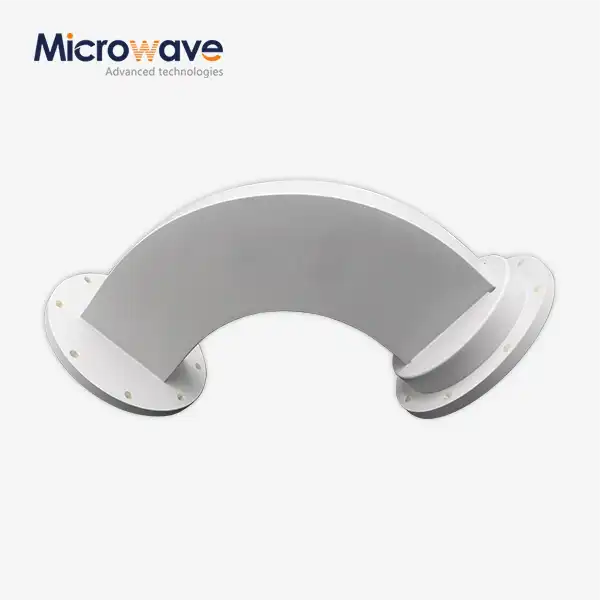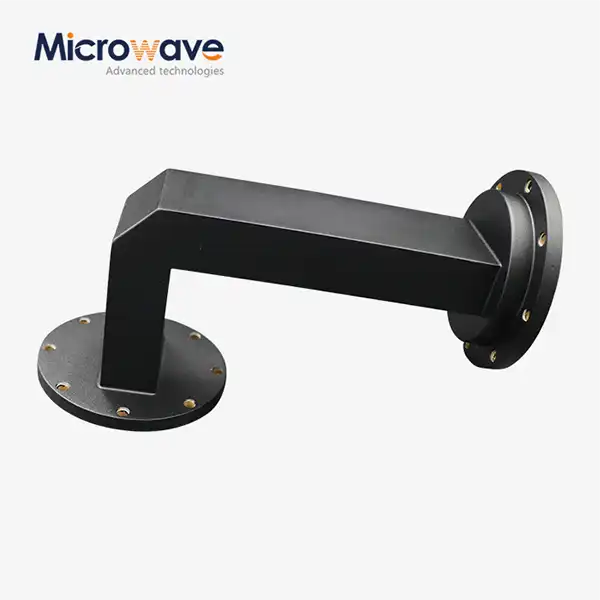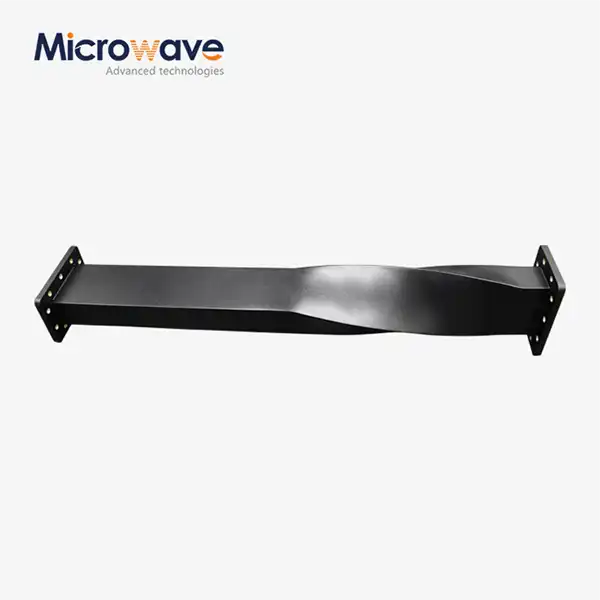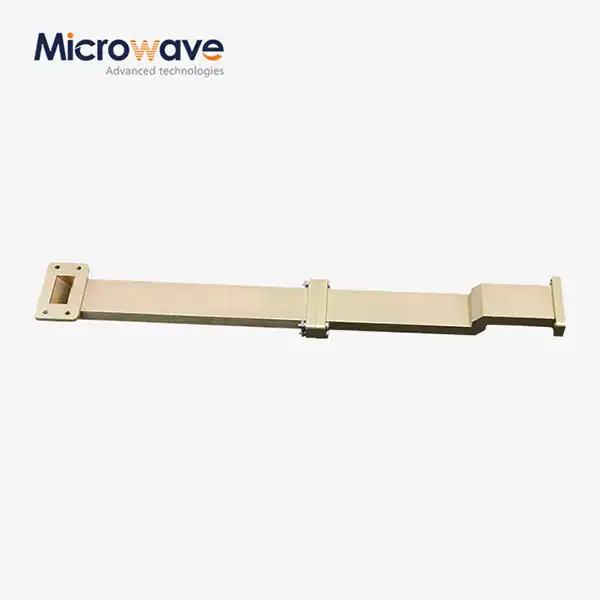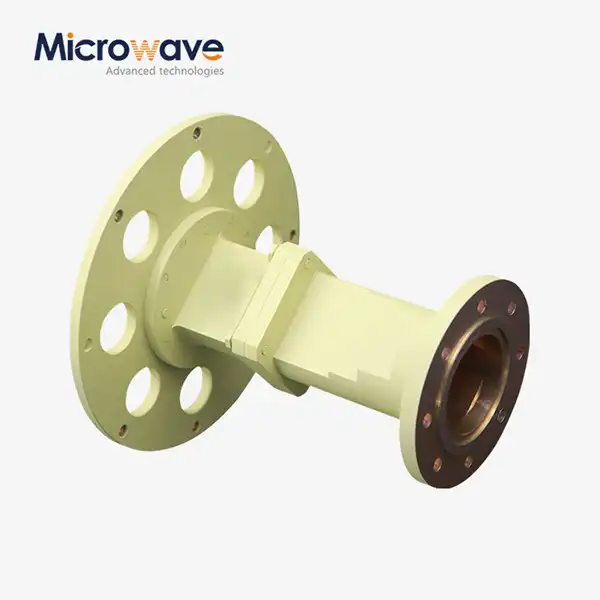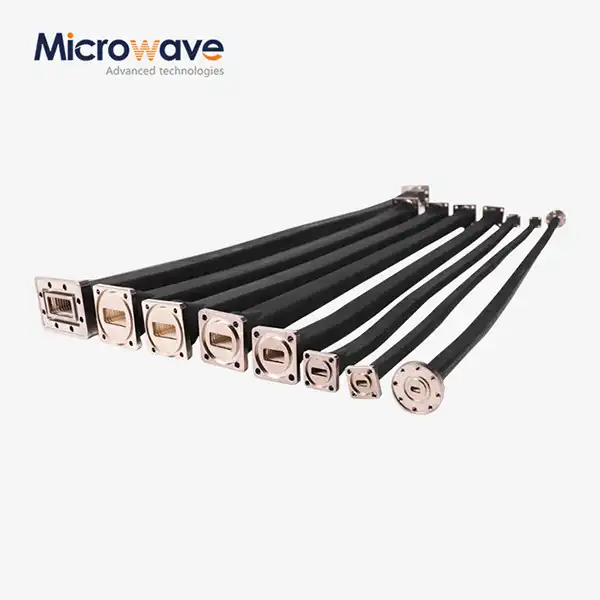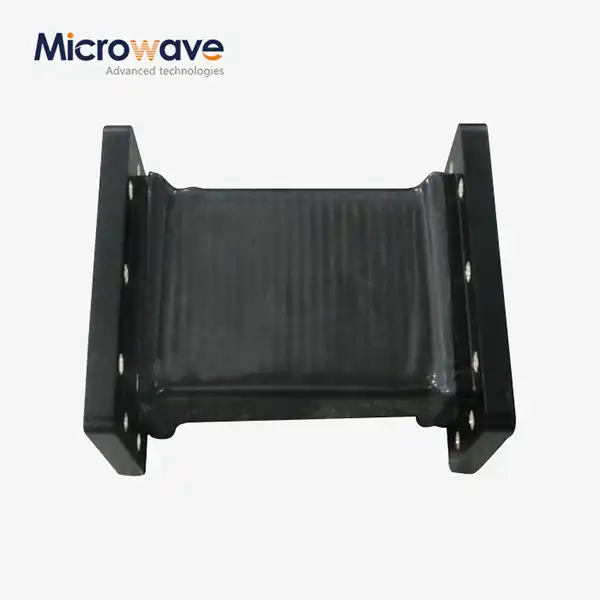What Sets Corrugated Horn and Multimode Horn Antennas Apart from Other Antenna Technologies?
In the rapidly evolving landscape of microwave and millimeter-wave communications, antenna technology plays a pivotal role in determining system performance and reliability. Among the various antenna configurations available today, Corrugated Horn and Multimode Horn Antennas stand out as exceptional solutions that offer unique advantages over conventional antenna designs. These sophisticated antenna systems distinguish themselves through their superior electromagnetic characteristics, including enhanced gain performance, reduced cross-polarization levels, and exceptional frequency stability across wide operational bandwidths. The distinctive corrugated structure and multimode capabilities of these antennas enable them to achieve remarkable beam symmetry and low sidelobe levels, making them indispensable for high-precision applications in satellite communications, radar systems, and advanced wireless networks where signal integrity and directional accuracy are paramount.
Superior Electromagnetic Performance Characteristics
Enhanced Gain and Directivity Properties
The Corrugated Horn and Multimode Horn Antenna design fundamentally excels in delivering superior gain and directivity compared to traditional smooth-walled horn antennas. The corrugated inner surface creates a unique electromagnetic environment that supports hybrid electromagnetic modes, resulting in significantly improved radiation patterns. These antennas typically achieve gain levels ranging from 20 dB to 40 dB, depending on the specific design parameters and frequency range. The corrugated structure effectively controls the electric and magnetic field distributions within the horn, leading to more uniform illumination of the aperture and consequently higher directivity. This enhanced performance stems from the ability of the corrugated walls to support both transverse electric and transverse magnetic modes simultaneously, creating a balanced hybrid mode that produces exceptionally symmetric radiation patterns. The multimode operation allows for optimal energy transfer and minimal spillover losses, making these antennas particularly valuable in applications requiring maximum power efficiency and precise beam control.
Exceptional Cross-Polarization Suppression
One of the most distinctive advantages of Corrugated Horn and Multimode Horn Antenna systems lies in their remarkable ability to suppress cross-polarization components. The corrugated surface design creates an effective impedance boundary condition that equalizes the electric and magnetic field components in both principal planes. This equalization results in extremely low cross-polarization levels, typically achieving better than -30 dB cross-polarization discrimination across the operational bandwidth. Traditional smooth-walled horns often suffer from significant cross-polarization due to asymmetric field distributions, but the corrugated design effectively mitigates this limitation. The corrugations act as a series of radial transmission lines that create a reactive surface impedance, forcing the electromagnetic fields to maintain proper polarization alignment throughout the horn structure. This characteristic makes these antennas particularly suitable for applications requiring high polarization purity, such as satellite communication systems, polarimetric radar applications, and precision measurement systems.
Wide Bandwidth and Frequency Stability
The Corrugated Horn and Multimode Horn Antenna design offers exceptional bandwidth capabilities, often achieving octave bandwidth performance with excellent stability across the entire frequency range. The corrugated structure provides frequency-independent impedance characteristics, enabling these antennas to maintain consistent VSWR performance across wide frequency spans. Advanced Microwave Technologies' designs achieve VSWR values below 1.30 at the low-end frequencies and better than 1.06 in narrow-band applications. The depth and spacing of the corrugations are carefully optimized to maintain proper hybrid mode operation across the entire bandwidth, ensuring stable radiation patterns and consistent gain performance. This frequency stability is achieved through the inherent broadband nature of the corrugated surface impedance, which remains relatively constant across multiple octaves. The multimode operation further enhances bandwidth performance by allowing multiple propagating modes to contribute constructively to the overall radiation pattern, creating a robust antenna system that maintains its electromagnetic characteristics across diverse frequency ranges.
Advanced Design and Manufacturing Excellence
Precision Corrugation Engineering
The manufacturing excellence of Corrugated Horn and Multimode Horn Antenna systems requires sophisticated engineering approaches to achieve optimal electromagnetic performance. The corrugation geometry must be precisely controlled to ensure proper hybrid mode operation and maintain consistent impedance characteristics throughout the antenna structure. Advanced machining techniques and high-precision manufacturing processes are employed to create the complex corrugated profiles with tight dimensional tolerances. The depth, width, and spacing of each corrugation are mathematically optimized based on electromagnetic simulation and theoretical analysis to achieve desired performance characteristics. Advanced Microwave Technologies utilizes state-of-the-art CNC machining capabilities and quality control systems to ensure that every corrugation meets stringent dimensional requirements. The corrugated surface typically consists of multiple concentric grooves with varying depths that create the necessary reactive impedance boundary conditions. The precision of these corrugations directly impacts the antenna's ability to support proper hybrid mode operation and achieve the desired radiation characteristics.
Premium Material Selection and Construction
The construction of high-performance Corrugated Horn and Multimode Horn Antenna systems demands careful selection of premium materials to ensure optimal electrical and mechanical properties. Advanced Microwave Technologies employs high-grade aluminum, brass, and copper materials that provide excellent electrical conductivity while maintaining structural integrity under various environmental conditions. The choice of material significantly impacts the antenna's power handling capacity, thermal stability, and long-term reliability. Aluminum construction offers excellent strength-to-weight ratios and corrosion resistance, making it ideal for aerospace and satellite applications. Brass and copper materials provide superior electrical conductivity and are particularly suitable for high-power applications where minimal ohmic losses are critical. The surface finish quality is equally important, as it affects the electrical boundary conditions and overall electromagnetic performance. Advanced surface treatment processes and precision machining techniques ensure smooth corrugated surfaces that maintain consistent electrical properties across the entire frequency range.
Quality Assurance and Testing Protocols
The manufacturing of Corrugated Horn and Multimode Horn Antenna systems incorporates comprehensive quality assurance protocols to ensure consistent performance and reliability. Advanced Microwave Technologies operates ISO 9001:2015 certified manufacturing facilities equipped with state-of-the-art measurement capabilities extending up to 110 GHz. Each antenna undergoes rigorous testing procedures including VSWR measurements, radiation pattern analysis, gain verification, and cross-polarization assessment. The company's 24-meter microwave darkroom facility provides unparalleled measurement capabilities for precise far-field characterization of antenna performance. The Antenna Plane Near and Far Field Measuring Recombination Chamber enables comprehensive analysis of electromagnetic characteristics across the entire operational frequency range. Quality control procedures include dimensional verification using precision coordinate measuring machines, surface roughness analysis, and electrical performance validation through automated test systems. These comprehensive testing protocols ensure that every antenna meets or exceeds specified performance requirements before delivery to customers.
Diverse Applications and Industry Integration
Satellite Communication Systems Excellence
The application of Corrugated Horn and Multimode Horn Antenna technology in satellite communication systems represents one of the most demanding and critical uses of these advanced antenna designs. These antennas serve as primary feeds for large parabolic reflector systems, providing the essential interface between the satellite transceiver and the reflector antenna. The exceptional cross-polarization performance and symmetric radiation patterns of corrugated horn antennas enable efficient illumination of parabolic reflectors, maximizing overall system gain and minimizing spillover losses. In satellite ground stations, these antennas must operate across multiple frequency bands while maintaining consistent performance characteristics. The wide bandwidth capabilities of corrugated horn designs allow single antenna systems to support both uplink and downlink frequencies, reducing system complexity and operational costs. Advanced Microwave Technologies' designs support frequency ranges up to 300 GHz, enabling operation across traditional C-band, X-band, Ku-band, and emerging Ka-band satellite services. The low sidelobe performance and excellent beam symmetry ensure minimal interference with adjacent satellites and optimal spectrum efficiency.
Defense and Aerospace Applications
Military and aerospace applications represent another critical domain where Corrugated Horn and Multimode Horn Antenna technology provides essential capabilities for radar systems, electronic warfare, and secure communications. The exceptional electromagnetic performance characteristics of these antennas make them ideal for precision radar applications requiring high angular resolution and low cross-polarization interference. Air traffic control radar systems utilize corrugated horn antennas to achieve ultra-sharp beamforming capabilities that enable accurate aircraft tracking even in challenging weather conditions. The robust construction and reliable performance of these antennas ensure consistent operation in harsh environmental conditions typical of military and aerospace applications. Defense applications often require antennas capable of operating across multiple frequency bands while maintaining low observability characteristics. The frequency-stable performance and controlled radiation patterns of corrugated horn antennas support these requirements while providing the reliability essential for mission-critical operations. Advanced Microwave Technologies' antennas operate across temperature ranges from -40°C to +85°C, ensuring reliable performance in extreme environmental conditions encountered in aerospace and defense applications.
Telecommunications Infrastructure and Research
The telecommunications industry increasingly relies on Corrugated Horn and Multimode Horn Antenna technology to support next-generation wireless networks and advanced communication systems. These antennas play crucial roles in point-to-point microwave links, cellular base station systems, and emerging 5G and 6G wireless infrastructure. The exceptional frequency stability and wide bandwidth capabilities enable support for multiple communication standards and future technology evolution. Research and development organizations utilize these antennas for innovative radar and communication system development, taking advantage of their superior electromagnetic characteristics for precision measurements and system characterization. The ability to achieve consistent performance across wide frequency ranges makes these antennas valuable tools for exploring new frequency bands and communication techniques. Advanced Microwave Technologies supports research applications with customized antenna designs tailored to specific experimental requirements. The company's technical expertise and manufacturing capabilities enable rapid prototyping and development of specialized antenna configurations for cutting-edge research applications. OEM services provide researchers and system integrators with flexible design options and technical support to achieve optimal performance in their specific applications.
Conclusion
The distinctive advantages of Corrugated Horn and Multimode Horn Antennas clearly establish them as superior solutions in modern microwave and millimeter-wave applications. Their exceptional electromagnetic performance, characterized by high gain, low cross-polarization, and wide bandwidth capabilities, sets them apart from conventional antenna technologies. The precision engineering and premium construction quality ensure reliable operation across diverse environmental conditions and demanding applications. These antennas continue to enable technological advancement across satellite communications, defense systems, and telecommunications infrastructure.
At Advanced Microwave Technologies Co., Ltd., we leverage over 20 years of manufacturing expertise and ISO-certified quality systems to deliver world-class antenna solutions. Our comprehensive OEM services, rapid prototyping capabilities, and dedicated technical support team ensure that your specific requirements are met with precision and efficiency. Whether you need standard configurations or completely customized designs, our experienced engineers work closely with you to develop optimal solutions that exceed performance expectations. Ready to enhance your system performance with superior antenna technology? Contact our technical team today at craig@admicrowave.com to discuss your specific requirements and discover how our Corrugated Horn and Multimode Horn Antennas can elevate your application to new levels of performance and reliability.
References
1.Clarricoats, P.J.B. and Olver, A.D. "Corrugated Horns for Microwave Antennas." London: Peter Peregrinus Ltd., 1984.
2.Olver, A.D., Clarricoats, P.J.B., Kishk, A.A., and Shafai, L. "Microwave Horns and Feeds." London: IEE Electromagnetic Waves Series, 1994.
3.Granet, C. and Bolton, R. "Comparative Study of Corrugated Horn Design for Dual-Reflector Antennas." IEEE Transactions on Antennas and Propagation, vol. 51, no. 6, pp. 1383-1392, 2003.
4.Wylde, R.J. "Millimetre-wave Gaussian Beam-mode Optics and Corrugated Feed Horns." IEE Proceedings H - Microwaves, Antennas and Propagation, vol. 131, no. 4, pp. 258-262, 1984.
5.Thomas, B.M. "Design of Corrugated Conical Horns." IEEE Transactions on Antennas and Propagation, vol. 26, no. 2, pp. 367-372, 1978.
6.Padman, R., Murphy, J.A., and Yates, J. "Detailed Far-Infrared Measurements of Feedhorn Antennas." International Journal of Infrared and Millimeter Waves, vol. 8, no. 12, pp. 1533-1551, 1987.




